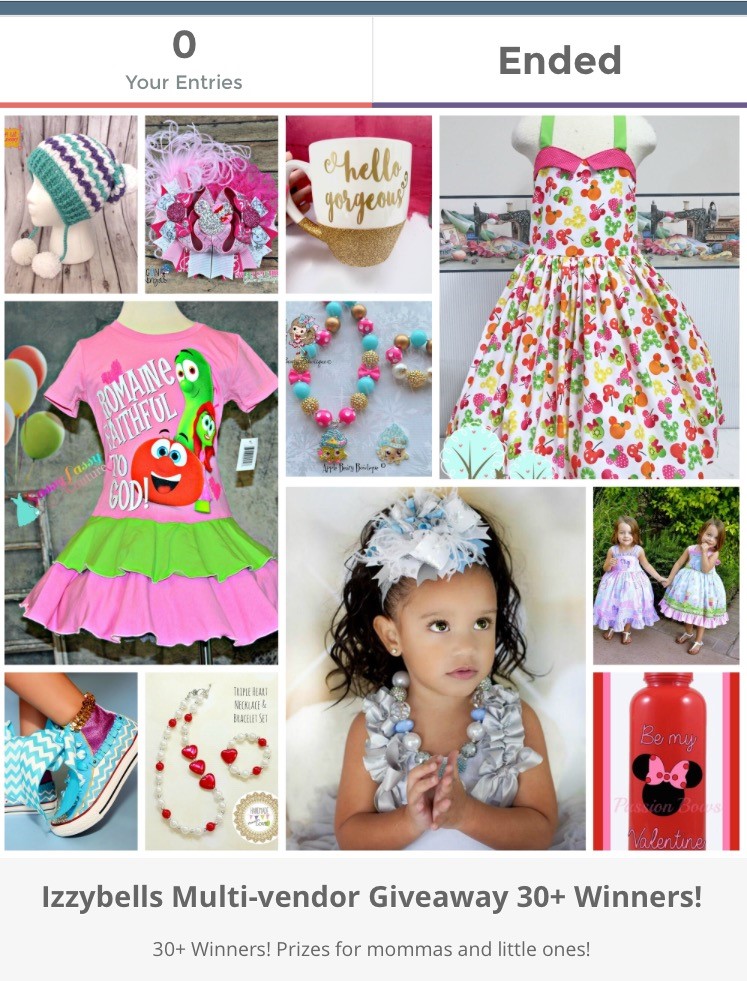Gone are the days when a customer walked away from a less-than-stellar dining, shopping, or service-related experience with head held low and disappointment weighing heavy on her shoulders.
Now, an unhappy customer can spread word of a business blunder in the blink of an eye by posting a bad review on Yelp, a scathing video testimonial on YouTube, or an unflattering post on Facebook.
Depending on the day and time, that post/video can go viral, causing pain and suffering for the business that did not seize the opportunity to right the wrong.
It takes insight, patience and a whole lot of customer communication to stay on top of the game these days.
Consider this scenario (names have been changed to protect the innocent):
Jim buys a coupon online for national brand carpet cleaning service.
Prior to the fast-approaching coupon expiration date, Jim calls to set up an appointment to have his carpets cleaned. Customer service representative claims not to know about the availability of online coupons and states she will have someone get back to Jim.
Three days go by – expiration date looms – Jim is sweating. Jim calls back, slightly irritated that the customer service representative did not follow through on her promise. This time, the customer service representative states that the coupon will not be honored.
Jim fumes, then contacts the online customer service department for the coupon company. He considers posting a scathing review of national carpet cleaning service on Yelp, as well as his Facebook and Twitter accounts.
However, before he has time to type up the review, the coupon company contacts the carpet cleaning company about the situation and follows up with Jim. Less than an hour later, a local franchise owner with said national brand contacts Jim, apologizes, clears the coupon with national, and sets up an appointment to clean Jim’s carpets that very week.
Carpets are cleaned and Jim is happy – coffee stains are gone.
Jim writes a great review for carpeting cleaning service on Yelp, Facebook, Twitter…and posts a picture of his spotless living room carpet on Instagram.
Scenarios like this happen millions of times each day, but they don’t always end with happy customers, clean carpets, and positive Yelp reviews.
Even though it seems simple enough to turn the situation around, companies often miss the opportunity to convert an unhappy customer into one that, at the very least, does not write a bad review on social media.
Putting the “Us” in Customer Experience
Evolving digital tools and technologies are strong drivers for changing consumer habits and expectations.
With access to what seems like an infinite amount of information available at the touch of a screen, it’s not surprising that customers expect an efficient purchase process and immediate solutions when problems arise.
But it’s important to note that, while customers’ use of technology may have changed, their expectations for customer service have remained the same: they want to be treated with respect, and they want to feel connected to the brand, the company, the product they are buying.
In their September 2015 article, “Building a design-driven culture” authors Jennifer Kilian, Hugo Sarrazin, and Hyo Yeon state that, in many cases, customers prioritize the experience of buying and using a product over the performance of the product itself.
For retailers and service providers, this means it’s critical to know how your customer experience stacks up against the competition.
You’re likely not the only company offering your product or service, after all.
What makes you stand out? Why do your customers choose you? Why do some of them choose to leave? Why did they choose your competitor when your offerings are so similar?
Though not a new concept, the idea of assessing “customer experience,” is a valiant attempt at understanding what, in a nutshell, a business needs to focus on to retain customers and remain in business.
In his October 2010 article, “Understanding the Customer Experience,” Adam Richardson states that, whether it’s on online, through email, on the phone or in person, customer experience is “…the sum of how customers engage with your company and brand, not just in a snapshot in time, but throughout the entire arc of being a customer.”
Social Media Marketing is the new Direct Mail
So how does today’s retailer stand out from the competition and build positive customer relationships?
In the past, relationship-building took place face-to-face or door-to-door: Ingvar Kamprad, the founder of IKEA used to work the cash registers in his stores to better understand his customers and their concerns.
Today, IKEA uses several digital platforms to connect with customers, such as Share Space, a site that encourages customers to share photos of spaces created using the brand’s self-assembled furniture, and “How to Build” videos that show customers how to assemble the furniture.
Even the company’s more traditional printed catalogue is available in an interactive, online version and an accompanying app with a “Place in Your Room” feature that allows users to try out furniture pieces in a virtual sense.
These advanced marketing techniques enhance and expand the customer experience, but never stray from the IKEA mantra: The customer comes first.
Billy Robinett, Vice President of Houston Pizza Venture, LLC – the company that owns the Papa John’s pizza franchise – says that, before the Internet, Papa John’s connected with customers through hand-delivered flyers and direct mail pieces, as well as through sponsorship of school and community events and sports teams.
Those tactics may have worked very well in the pre-Internet era, but today’s tech-savvy customers are less likely to shop at storefronts or pay attention to “snail mail.”
Connecting with customers now means manning the virtual cash registers (i.e., customer support chat lines) or reaching out through viral videos, Facebook posts, or targeted email campaigns.
Robinett says Papa John’s still maintains its strong connections with schools and organizations, but the company has also shifted some of its focus to online ordering and sales to accommodate its customers’ increasing use of web and mobile technologies.
Papa John’s is also embracing social media as a way to create and strengthen its relationships with pizza lovers.
For example, Papa John’s uses Twitter’s customer service tools to scan content on that platform for certain phrases, such as “I am hungry” or words to the effect that someone had a bad experience at any fast food restaurant.
When those phrases are detected, a message is sent directly to the sender, such as, “Hungry? Why not try one of our pizzas – get 10% off with this code,” or “We are sorry to hear you had a bad experience. Have a pizza on us with the code.”
“Technology just opened another door for us to reach our customers,” Robinett said. “We still do a lot of things to create emotional connections with customers, such as showcasing our partnerships with local sports icons like JJ Watt and James Harden, and talking directly to our customers on social media.”

In other words, if you want to get a high customer experience score, all it takes is a shift in thinking and some virtual elbow grease.
It’s not that much different than working the cash register or hanging flyers on door handles.
The common denominator between the “old” and the “newer” is communications. Without communications tools, your efforts may fall flat.
Position Your Business for Success
Here are five communications concepts – and tools for implementation – to proactively position your business and connect with current and potential customers in the virtual world:

1. Catch your customer’s eye
If you’re not hanging out where your potential customers are hanging out, the potential for getting their attention is slim to none.
Various methods of advertising, media and public outreach, and one-on-one interaction are parts of the equation; but more and more a strong online presence and strategy is an essential element of a business’ marketing plan.
A clean, clear and user-friendly website is a must; as well as informative and engaging content on social media platforms.
Here are a few tips for creating eye-catching, engaging websites and landing pages:
- Make sure your landing page(s) is crystal clear about what product(s) or service(s) you offer. Attention spans have grown short, and customers are likely to leave a website immediately if the value proposition isn’t clear. Try UsabilityHub to test the efficacy of your landing page headline.
- Don’t forget a user-friendly mobile website. A growing share of web traffic is from mobile devices. You don’t want to drive away potential business because on-the-go customers are concerned that they won’t be able to shop or reach you on their smartphones.
- Utilize tools like Qualaroo to get feedback about what’s working and what’s not on your website, and the reasons for both.
- Make it easy and fun for customers to engage with you on social media. Provide direct connections to your social channels through your website, and monitor them closely with Tweetdeck or Hootsuite. Keep this in mind –social media is another way for people to interact in a one-on-one format, so if you go days without replying to a customer’s question, comment or request, it is on par with not returning a message on your answering machine from the days of yore.
2. Be human, not machine
Put yourself out there, be bold and engage with your customers, particularly when they are not satisfied. Don’t use acronyms or industry-speak. Be relaxed, yet professional. Demonstrate that you care and that you’re improving their life in some way.
Communications tools that help humanize your digital presence include:
- Use live chat on your website so that you can talk directly to potential customers who have questions or are shopping around and want to get a feel for what you do and how you do it. For many people, Live chat is a first step toward building a relationship with a company. Based on that experience, they may be willing to take the next step.
- Although many cyber shoppers prefer live chat or email, some want to speak directly to a company representative by phone, so ensure that you have a contact phone number on your website and other marketing materials.
- Provide training so that your employees are well versed on personalizing a customer’s experience. There are several customer relation management software platforms available that allow you to keep track of customer contact details, time and date of interactions, and many have email and website interface capabilities so that you can interact in a variety of ways.
- Make sure that your communications products – digital or paper – have content and graphics that are brimming with personality. People trust brands they know. If the voice of your website copy is bland or cold, you are missing a valuable opportunity to build a connection.
- Experiment with email marketing using tools like , which make it easy to create subscriber forms and send email to your web subscribers. Again, engaging content is key in all communications, including those sent to customers through email.
3. Build their confidence
A business owner knows what his or her company does best.
Don’t be afraid to focus on what you are good at, WHY you do it, and perhaps most importantly, why it will help customers have a happier, simpler, fuller, more informed life.
Customers want and need to know WHY you’re better than all the rest – so tell them. Tweet this
And, telling them why you do it is the icing on the proverbial cake.
Your story sets you apart from the rest, gives you a human face and can set the stage for a long, loyal relationship.
- Post blogs on your website that provide information about trends in your product line or industry, or that offer useful information to your customers and potential customers. Focus on positive messages – readers on your website want to be encouraged and shown the benefit of what you provide instead of focusing on negativity.
- Give your customers the floor! Provide them with an easy avenue to write and post a review on your website. The benefits are two-fold: You are one of the first to see the review and can respond to negative feedback quickly, which may result in the customer taking down the review or at least modifying the content. Secondly, many shoppers trust reviews and recommendations from their peers, so a good review may go a long way toward selling your product for you. Be sure to include the reviewer’s name and company, if they allow.
- Make sure your web copy is current and clean. More is not always better. Consider hiring an experienced consultant to assist in this process – they are good at what they do and bring a fresh eye to the process.

4. Put a face to your name
As any good reality show illustrates, people like to know what other people are all about and what makes them tick. The same can be said for the businesses they choose to patronize.
If a company keeps customers at arm’s length, then the customer never establishes a bond with the products or services, and can be easily swayed to the competition.
There are myriad ways that you can involve your customers, from videos to events to a fun contest that you advertise on your website and social media accounts.
- Post personalized videos on your website. Start with your business’ “birth” story and take it from there. Remember the customer as you are producing and editing these videos – few people are willing or able to watch a 30-minute documentary on any one subject, but will engage in shorter, personal videos about your employees, how you source your product, and what community organizations you support.
- Use colorful photographs and graphics to communicate your brand to shoppers. Don’t be afraid to try unique and even quirky methods, but always remain true to your brand image. In other words, don’t try to be something you’re not!
- Create a newsletter that provides content on your latest and greatest products and company news.
- Create an online customer community where your customers can gather in a web-based environment to discuss problems, post reviews, brainstorm new product ideas and engage with one another about your company’s products, services and brand. offers an online customer community platform that allows you to monitor it from social media so that you can provide input when needed, and gather valuable customer insights.
- Participate as a sponsor or volunteer in community events. Serve as a mentor at your local elementary, middle or high school. The more you get your face out there, the more customers you may draw to your company because many enjoy aligning themselves with businesses that are dedicated to making a difference in their community.
5. Avoid “turtle syndrome”
Don’t pull your head in and hide when you hear – or see – the words, “I never got…” or “This is not what I ordered…” or even the more general “I am not happy with…”
View these situations as problems to be solved so that a) you improve your product and service; and b) you gain a customer for life.
- Pick up the phone, or respond to the email, text message or social media post that outlines the customer’s concern, and immediately jump in with both feet and work with your customer to find a solution to the problem.
- Scan social media platforms for company reviews of all types – good, indifferent or bad, and respond immediately and directly to the reviewer in a positive way. That proactive stance can go a long way toward winning back a customer, and gaining additional customers who witnessed the interaction on social media.
- Be proactive and ask your customers for feedback. This can be accomplished in many ways – through online surveys ( Monkey is a good source), during live chat or customer service calls, through social media channels or in person. This allows you to draw information from customers who have not provided feedback on their own, but who may have good suggestions from a user’s point of view.
Today’s business climate demands more of business owners and their employees, but the interaction with customers has its benefits: repeat sales, rising profits, and hopefully, long-lasting relationships.
When you feel the responsibilities of the customer experience process weighing heavy on your shoulders, recall the famous words of Sam Walton, founder of the mega-giant retail chain Wal-Mart:
“There’s only one boss. The customer. And he can fire everybody in the company, from the chairman on down, simply by spending his money somewhere else.”

















![Reblog this post [with Zemanta]](https://www.thewritersforhire.com/wp-content/HLIC/54e6a3db43b098ecbf5db09e027cb1c1.png)
